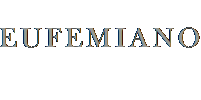|
Raúl Chávarri, 1973
Such realisms are defined by factors of a social nature; they are, in a certain sense, painters characterised by their social concerns, those that initiated certain realist trends during the civil war, preferring creation to the still prevailing academicism and attempting to consolidate a political aesthetic in keeping with the changing face of Spain. In the 40's Eufemiano Sánchez takes a totally different perspective and experiments with the exacerbation of realism based on a return to the treatment of the object that had been inherent to traditional Spanish painting, reflecting a concern for fabrics and wooden materials that had already been present in the works of Sánchez Cotán and Zurbarán. Eufemiano's works clearly reflect the well-defined nature of his social attitude, in an era of innovative renovation this first Spanish ultra-realist plays with the innovation of traditional foundations.
Eufemiano, who, until the 1940's, was a young painter characterised by a brilliant cultivation of figurative techniques and genres, was lead by his own desire for perfection in figurative conception to create, towards 1942, a new style of painting that Harold Stevenson would refer to twenty years later as the utmost innovation.
Eufemiano would stand on his own right in a history of traditional painting; his works reflecting customs, his experiments of a folkloric nature with African painting, his portraits and landscapes fully guaranteeing this position. Nonetheless, what is most interesting for the purposes of our study is that he advocated and explored the possibilities of an avant-garde realism at a time when no one in Spain was doing this and when the great informalist trends, which are the precursors of the same, had no yet been defined.
The ultra-realism of Eufemiano's works was first based on a certain divo-like style, characteristic of an artist who dominates the secrets of his trade, this being flaunted not through his attitude but rather through his work. In this respect, Eufemiano painted large cloths hung over black -or at least dark-coloured- backgrounds in a way in which the great masters of the genre would later do, among others Adriaensens. Eufemiano also explores the position of the object and its plastic determination, not in the carefree manner in which it would subsequently be explored by the American Pop movement, but rather with rigorous and knowledgeable methodology, seeking to discover what the object provokes as an independent entity. He likewise confronts and thereby lays the path for the great trajectory of the ultra-realist portrait and, above all, he redefines the two-fold task of studying the object from a pictorial standpoint as a testimony of humanity and of the human body as an objective species. In this last respect his nudes, which reflect a search for a perspective of absolute proximity, express a different understanding the rendering of the human body in paint, this no longer being meticulous, but rather subject to a realist imperative that modifies and determines the conception and trajectory of the painting itself.
Whereas the precedents seen in the previous chapter were far-removed and extinguished experiences, with ultra-realism we note that the precedent, the first thereof, is a real and vivid presence, inasmuch as, although Eufemiano painted extremely slowly, as is common to the majority of the ultra-realists, he never stopped working on the patient creation of his realizations.
|



